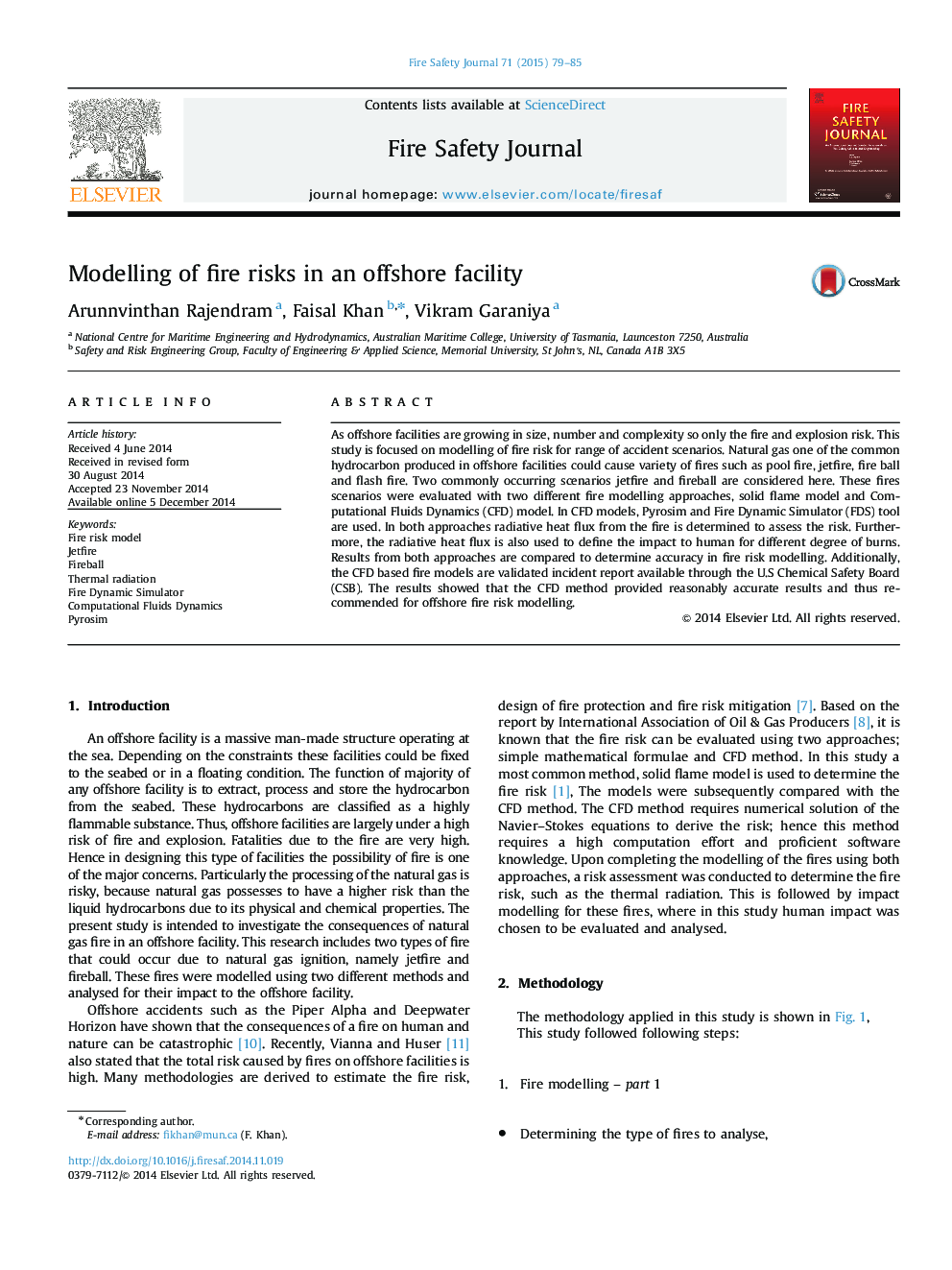| Article ID | Journal | Published Year | Pages | File Type |
|---|---|---|---|---|
| 269785 | Fire Safety Journal | 2015 | 7 Pages |
•Jet fire and fire ball scenarios analysed using analytical and Computational Fluid Dynamics (CFD) approaches.•The CFD approach provided better results for the actual reported fire events compared to the analytical method.•Fire Dynamic Simulator results is validated and is recommended as a fire risk modelling tool.
As offshore facilities are growing in size, number and complexity so only the fire and explosion risk. This study is focused on modelling of fire risk for range of accident scenarios. Natural gas one of the common hydrocarbon produced in offshore facilities could cause variety of fires such as pool fire, jetfire, fire ball and flash fire. Two commonly occurring scenarios jetfire and fireball are considered here. These fires scenarios were evaluated with two different fire modelling approaches, solid flame model and Computational Fluids Dynamics (CFD) model. In CFD models, Pyrosim and Fire Dynamic Simulator (FDS) tool are used. In both approaches radiative heat flux from the fire is determined to assess the risk. Furthermore, the radiative heat flux is also used to define the impact to human for different degree of burns. Results from both approaches are compared to determine accuracy in fire risk modelling. Additionally, the CFD based fire models are validated incident report available through the U.S Chemical Safety Board (CSB). The results showed that the CFD method provided reasonably accurate results and thus recommended for offshore fire risk modelling.
